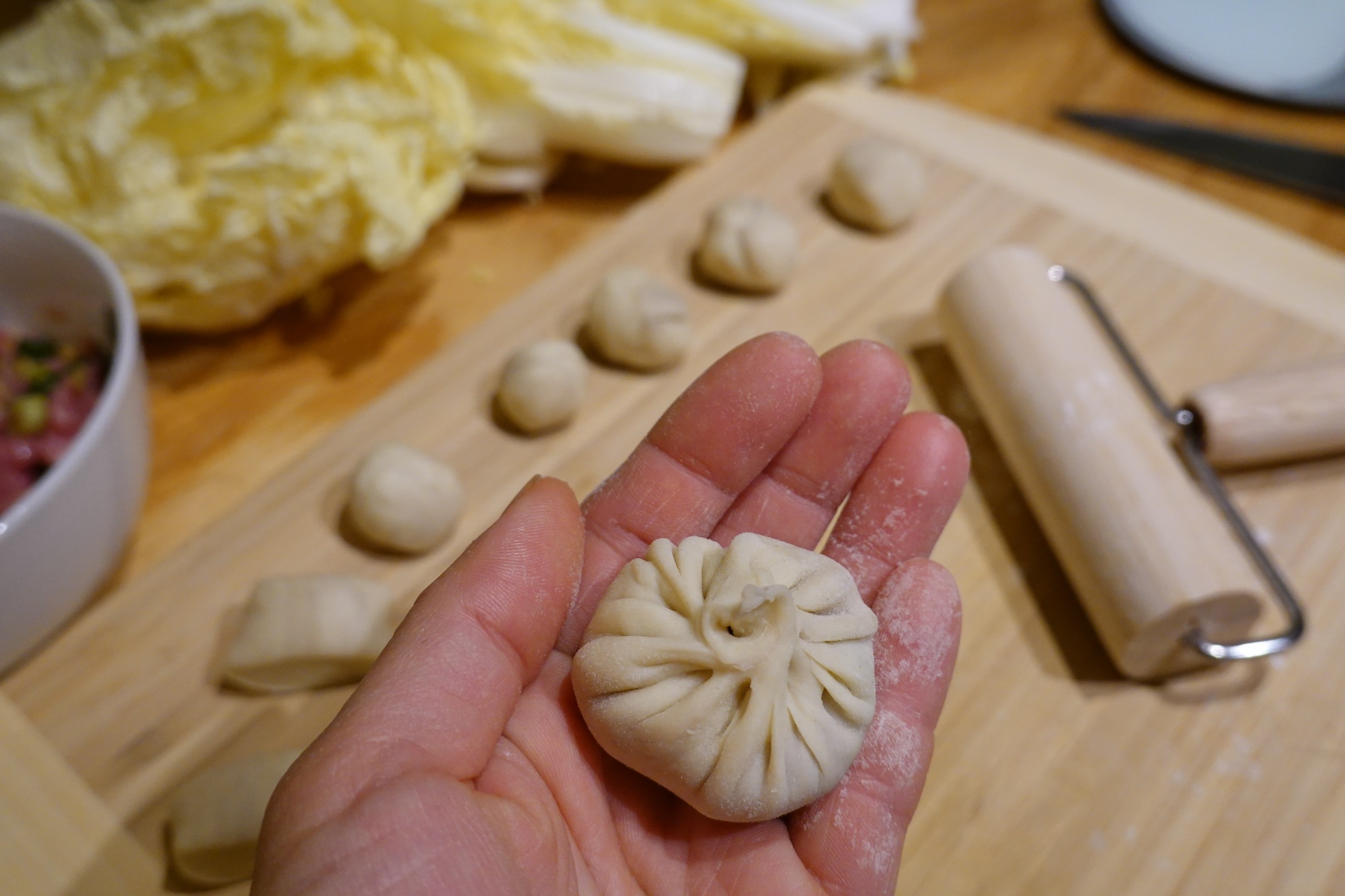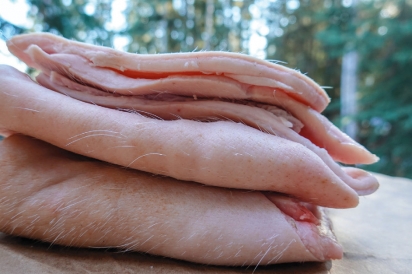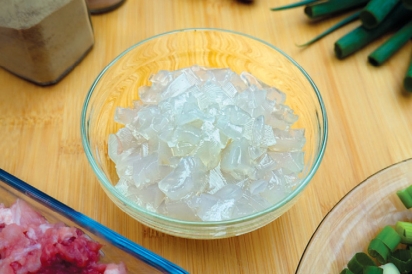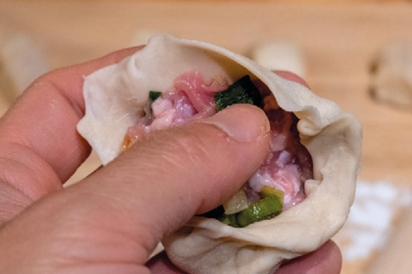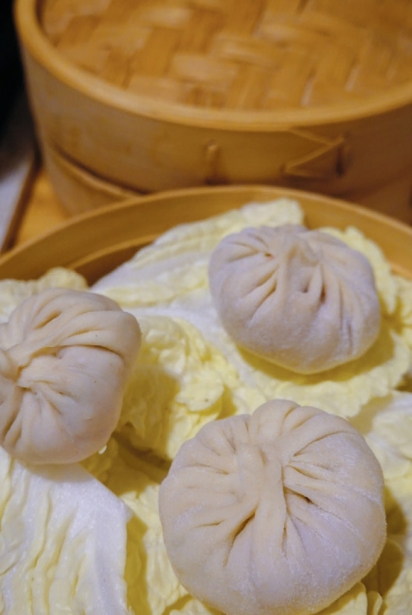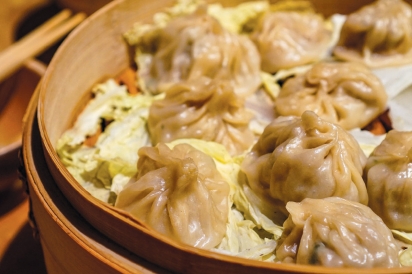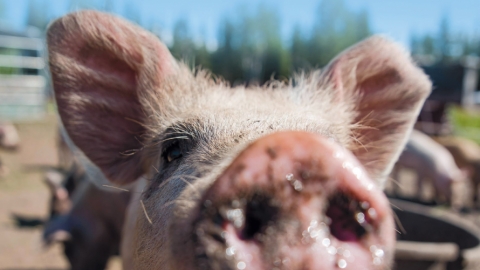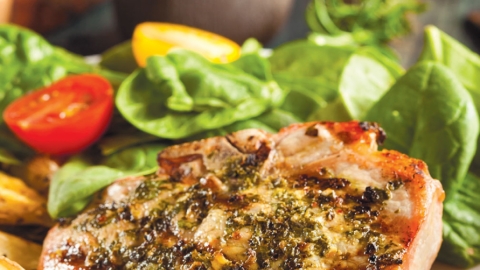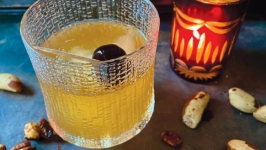Hands Begin to Know: A Dumpling Story
Editors’ note: this story is a follow-up to Jennifer Nu’s pig butchering tale, “Snout to Table,” which you can read in the Fall 2020 issue of the magazine, and online.
Bright spicy aromas of ginger root mingle with pungent scallion. A thin round of cream-colored dough drapes the palm of one hand. The thumb of my other hand gently presses a cold morsel of minced pork at the dough’s center. This is the heart of the dumpling. Fingers and palm cradle the bundle, surrounding the dough and shaping it into a wrapper. Both hands work together to press tiny pleats into the dough, repeating and rotating until a final twist on top closes and completes it. I set the tiny soup dumpling on a bed of greens at the bottom of the steamer.
Soup dumplings are a new food for me. I first heard about them five years ago while on a serendipitous trip to the gleaming cosmopolitan city of Shanghai. Inspired by China’s diverse culinary traditions, I searched Airbnb Experiences for cooking classes and found a soup dumpling workshop led by Cici Zhong, a cheerful local who loves to share her passion for the tiny dumplings filled with pork and a rich soupy surprise. In the Mandarin Chinese dialect, they are called xiaolongbao (little basket steamed buns) because they are traditionally steamed in bamboo baskets. Soup dumplings originate from the Jiangnan region of China, which includes the fertile areas south of the lower Yangtze River, including Shanghai. Some say this stuffed treat is technically bao, which is a steamed bun, as opposed to a dumpling, which is boiled or fried. For my family, neither dumpling nor bao is part of our contemporary culinary repertoire. Perhaps it is because we are descendants of rice-eating peoples in southeast Asia, or because our food traditions have been fragmented through generations of migration. Since our own stories are lost in the memories of those I never met, I deeply appreciate those who generously share their own food traditions with me.
At the class, it was fascinating and intimidating to prepare the xiaolongbao components from scratch. Under the encouraging guidance of our teacher, we wrapped and steamed them. In the end, our group sat down for a farewell meal and enjoyed baskets of freshly steamed dumplings with a simple dipping sauce.
Upon returning to Alaska, I was excited to make soup dumplings at home. Nearly all ingredients were familiar and available at the stores, but I did not know where to find raw pork skin and I wanted to know where the pork meat came from. With a stubborn insistence on sourcing my own pork skin and pork meat, I ended up on a journey of learning how to dispatch and butcher an ethically raised pig with friends. Yet sourcing the ingredients was only the beginning. Little did I realize, the next saga of the pig involved another journey of learning to make soup dumplings on my own at home.
Starting from scratch
While xiaolongbao might be an everyday breakfast or snack food in Shanghai, making soup dumplings is a special occasion event for me. Each dumpling-making session requires committing my tiny kitchen to days of preparation and washing dishes. The counter must be clear of clutter, and fridge space, which is limited, made available. I thaw out frozen ingredients in the fridge, set out all the dry ingredients, and set up steaming equipment.
I recall admiring teams of xiaolongbao masters in Shanghai as they swiftly wrapped bun after bun into stacks of bamboo steamers. At home, my still-learning hands work slowly. Each bundle is a fresh opportunity to practice patience, both with the bao-to-be and with myself. Like each pleat of the dough, learning to make xiaolongbao at home requires repetition and perseverance, guidance, and corrections. A practice. I remind myself to slow down because I am still learning.
For years, my soup dumplings were misshapen, full of holes, and devoid of soup. Yet they were all equally delicious. I summon the willpower to try again, eating both the mistakes and the successes. Over time, my awkwardness melts into growing confidence.
Improvements are subtle. The pork aspic is clearer and firmer. Pleats in the dough are more pronounced and numerous. Hands begin to know. The mind begins to trust the hands. Experience forges new skills out of memory and muscles. The dumplings begin to look better just as the filling starts to run out.
Skin to soup
The saga of the soup dumpling heralds back to the day the pig becomes pork. Honoring the pig for all it provides, my friends and I aim to use as much of it as possible. With hot water, simple tools, and collective arm power, we remove the outer skin and hair. The day after butchering, I take home sections of pork skin. Brief parboiling softens the fat for easier trimming. Ribbons of translucent pig skin and ginger boil for hours to make a collagen-rich stock that gels overnight in the fridge. Aromatic pork aspic. Patience, perseverance, and precision are the secret ingredients of soup dumplings.
Filling
Ginger root grates against the biting teeth of a microplane zester, releasing spicy brightness into my kitchen. A knife transforms slender scallions into a pungent pile of green and white on the cutting board. The food processor pulses fresh pork meat into a paste. I add white pepper, salt, sesame oil, and cooking rice wine. My clean hands massage a balance of aromatics and meat. Crystalline cubes of pork skin jelly join the filling at the last minute.
Wrapper
A simple combination of water and flour gathers into dough. It rests before kneading smooths it into readiness. I gather a group of friends to help. Using a rolling pin, we flatten the dough into thin, sturdy circles. A cold morsel of filling sits at the center of the dough. Like dance partners, two hands synchronize in motion as fingers form many pleats, turning and pinching over and over. The mass of meat and dough takes its final shape of a rotund bun, filled with meat and a soupy surprise, like a wrapped gift. Soon, a collection of xiaolongbao sits atop a bed of edible leaves in the steamer to prevent their delicate skins from sticking to it. Heat transforms water into steam. Steam transforms flesh into meat, gelatin into soup, dough into dumpling skin, and many flavors into a feast.
Eating
I use chopsticks to hold a soup dumpling and take a bite, letting the juice flow into a spoon. I slurp the juice, then keep eating. The xiaolongbao celebrates the pig’s many gifts, and everyone who contributed in creating the experience. Each bite savors the spectacular reward after days of preparation and years of learning. A shared meal shaped by our many hands and collective learning leaves us all with full bellies and contented hearts.
Author’s note: I first learned how to make soup dumplings from an Airbnb Experience class in Shanghai taught by Cici Zhong. Cici continues to offer soup dumpling classes both in-person in Shanghai and online.


